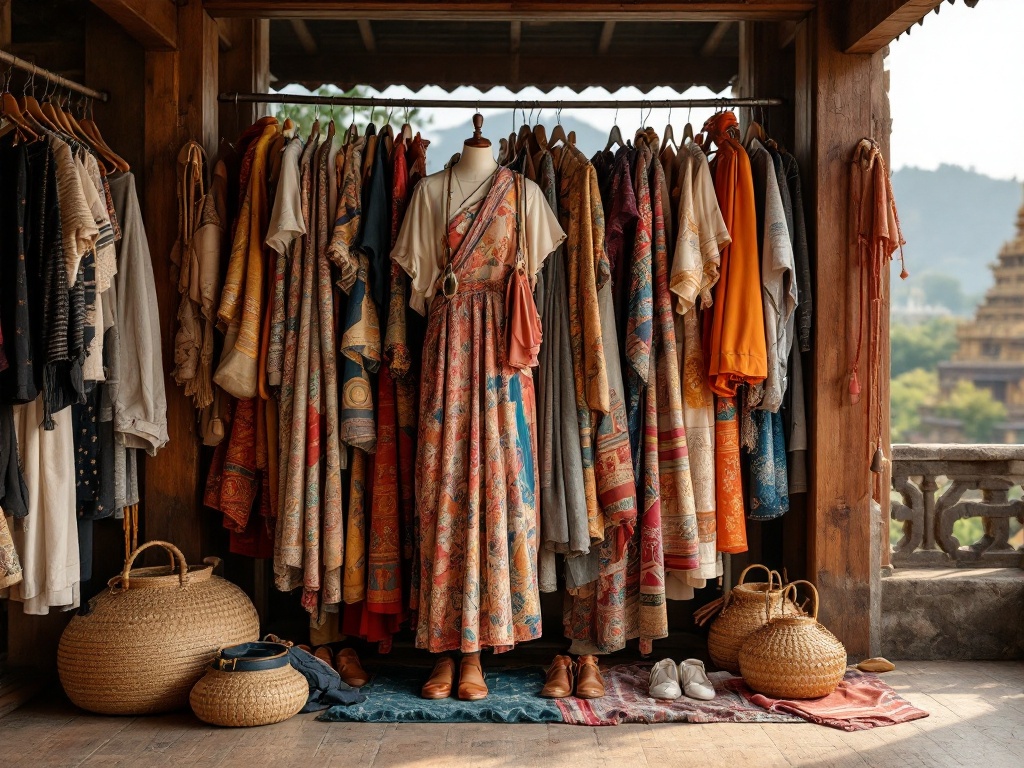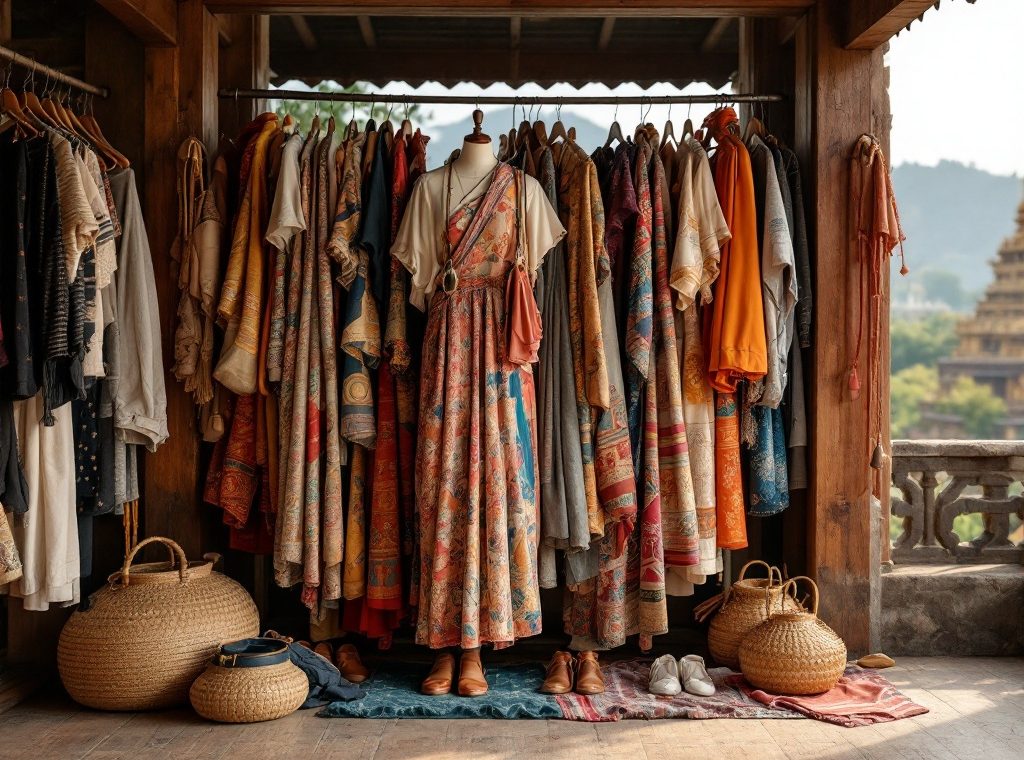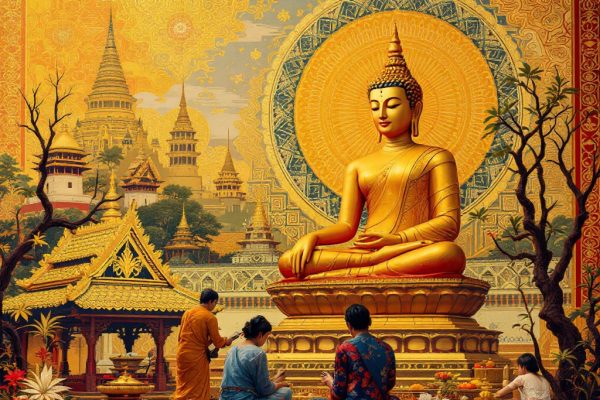Myanmar Dress Rules: What to Wear During Your Trip
Planning a trip to Myanmar? Respecting local customs, especially dress code, is crucial for a positive experience. Modest attire, covering shoulders and knees, is essential, particularly when visiting sacred temples and pagodas. Learn how to embrace the traditional longyi and navigate seasonal clothing choices for a respectful and comfortable journey. Discover practical tips for blending in and showing reverence for Myanmar’s rich Buddhist culture. Read on to prepare for your unforgettable Myanmar adventure.
Important information

- Dress modestly, covering shoulders and knees, especially at religious sites.
- Wear loose, comfortable clothing made of breathable fabrics like cotton or linen.
- Remove shoes and socks before entering temples and pagodas.
- Consider wearing a longyi, a traditional Burmese garment.
- Adapt your clothing choices to Myanmar’s tropical climate and seasonal changes.
Understanding Myanmar Dress Rules
When visiting Myanmar, understanding the local dress code is essential, particularly when visiting religious sites. Modesty is key, reflecting Buddhist traditions. Covering your shoulders and knees is a sign of respect, especially in temples and pagodas. Loose, comfortable clothing is also recommended for Myanmar’s climate.
The Importance of Dressing Conservatively
When visiting Myanmar, dressing modestly is a sign of respect for the local culture, particularly at religious sites. This thoughtful gesture also fosters positive relationships with the Burmese people. Opting for conservative attire is key.
Cultural Sensitivity and Etiquette Rules
When visiting Myanmar, show respect for local customs by dressing modestly. This means covering your shoulders and knees. Instead of sleeveless shirts and short skirts, opt for options like:
- short-sleeved shirts,
- long skirts, and
- pants.
Impact of Myanmar’s Buddhist Culture on Dress Code
When visiting Myanmar, remember that modest dress is customary, particularly at religious sites, reflecting the importance of Buddhist culture. Covering your shoulders and knees is generally recommended. The longyi, a traditional wraparound skirt, exemplifies this cultural norm.
What to Wear in Myanmar: Practical Clothing Tips
Respectful attire is essential when traveling to Myanmar. Women should choose loose, lightweight clothing that covers their shoulders and knees. Ideal options include long skirts, pants, and sleeved shirts. Men should wear long pants and shirts with sleeves. T-shirts are acceptable, but tank tops are not.Given Myanmar’s tropical climate, breathable fabrics like cotton and linen are recommended. Consider purchasing a longyi, a traditional Burmese garment perfect for temple visits, from a local vendor.Comfortable walking shoes are essential for exploring. Remember to remove your shoes before entering temples and pagodas as a sign of respect.
Appropriate Dress for Women
Myanmarese women often wear short-sleeved shirts and long skirts, balancing local tradition with modesty.
Men’s Dress Code in Myanmar
When visiting Myanmar, men should generally wear long pants and shirts with sleeves. Longer shorts that extend past the knee are acceptable for casual wear, but packing a longyi is essential for temple visits as a mark of respect. Avoid wearing sleeveless shirts, particularly at religious sites.
Dressing for Religious Sites: Temples and Pagodas
Showing respect is crucial in Buddhist culture. Covering your shoulders and knees demonstrates this respect, honoring the sanctity of religious sites and reflecting traditional values of modesty. Before entering temples and pagodas, removing your shoes is essential. This symbolizes leaving worldly concerns behind and helps maintain the cleanliness of these sacred spaces. Consider wearing easily removable footwear for convenience.
Why Cover Shoulders and Knees?
In Buddhist traditions, dressing modestly by covering your shoulders and knees is a sign of respect. This practice helps preserve the sanctity of temples and other sacred sites, honoring Buddhist customs.
Footwear Considerations: Removal at Religious Sites
When visiting Myanmar’s temples and pagodas, please remove your shoes and socks. This shows respect and helps maintain the cleanliness of these sacred sites. Slip-on shoes or sandals are recommended for easy removal.
Traditional Myanmar Attire: The Longyi
In Myanmar, both men and women traditionally wear the longyi, a versatile sheet of cotton or silk. Visitors are also welcome to embrace this custom, simply wrapping the fabric around their waist and knotting it at the front or side. It’s especially important to wear a longyi when visiting sacred sites like pagodas and temples.
How to Wear a Longyi for Tourists
Putting on a longyi is easy. Simply wrap the fabric around your waist, similar to a sarong, and fold it over in front to secure it. Taking it off is just as easy.
Best Time to Visit and Dress Accordingly
October to February (Dry Season)
Pack light clothing such as cotton shirts and linen trousers or skirts. Bring a light jacket for cooler evenings. Temperatures are comfortable with minimal rain.
March to May (Dry Heat)
Wear loose-fitting, light-colored clothing. A hat and sunglasses are essential for sun protection.
June to September (Monsoon Season)
Pack waterproof gear, including a raincoat and waterproof shoes.
Respectful Attire
Regardless of the season, always dress respectfully when visiting religious sites.
Adjusting Your Wardrobe for Seasonal Changes
When packing for Myanmar’s tropical climate, prioritize light, breathable clothing. It’s also important to pack conservative outfits out of respect for local customs.









